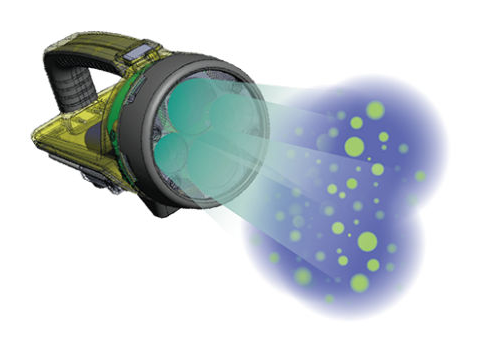Welcome to the realm of ready-to-eat foods, where convenience meets culinary delight. In this fast-paced industry, ensuring the safety and quality of products is of utmost importance. Enter Cleanspect™ AI-Powered Multispectral Fluorescence Image-Guided Surface Contamination Detection, a cutting-edge solution revolutionizing safety protocols in the ready-to-eat food industry.
In the bustling world of ready-to-eat food production, surfaces encounter a myriad of contaminants that pose risks to consumer health. From bacteria to mold, the threat of contamination looms large. With Cleanspect™ technology, we illuminate the invisible, detecting biofilm on filling machines and other equipment, and identifying surface contaminants that could lead to foodborne illnesses. By uncovering these hidden dangers, we empower infection control and prevention specialists to take targeted action to safeguard consumer health.
Using Bactiscan’s science-based cleaning verification and preventative control system, you can assess your cleaning outcomes to reduce food contamination and foodborne illnesses.
Recent studies published by leading food safety industry publications shed light on the importance of fluorescence image-guided surface contamination detection in the ready-to-eat food industry. According to research from the Food and Drug Administration (FDA) and the World Health Organization (WHO), advanced detection technologies like fluorescence imaging are essential for upholding safety standards and preventing foodborne illnesses in ready-to-eat foods.
At Cleanspect™, we understand the critical role that infection control and prevention specialists play in ensuring the safety of ready-to-eat foods. By inspecting surfaces in the ready-to-eat food industry and detecting surface contamination, our technology provides specialists with the insights they need to implement targeted cleaning and sanitation protocols. From food processing facilities to packaging plants, we work hand-in-hand with industry professionals to maintain the highest standards of hygiene and safety.
As we navigate the ever-evolving landscape of the ready-to-eat food industry, safety remains our top priority. With Cleanspect™ technology, we’re paving the way for a safer future, empowering infection control and prevention specialists with the tools they need to protect consumer health. Are you ready to join us in our mission to ensure the safety and integrity of ready-to-eat foods?
Step into a safer future for ready-to-eat foods with Cleanspect™. Let’s work together to uncover hidden contaminants and ensure the well-being of consumers worldwide.

The facilities handling ready-to-eat (RTE) foods must ensure that all precautions are taken to protect consumers, whose products are particularly at risk for causing food-borne illness. Using Cleanspect™ to detect surface contamination not only ensures a consistently high level of accuracy and quality for RTE food processors but also permits them to get results immediately, enabling them to release products faster for optimal freshness and quality.

The Cleanspect™ Certified Clean program goes above and beyond the scientific knowledge that the ready-to-eat food industry uses to prevent contaminations and food-borne illnesses.